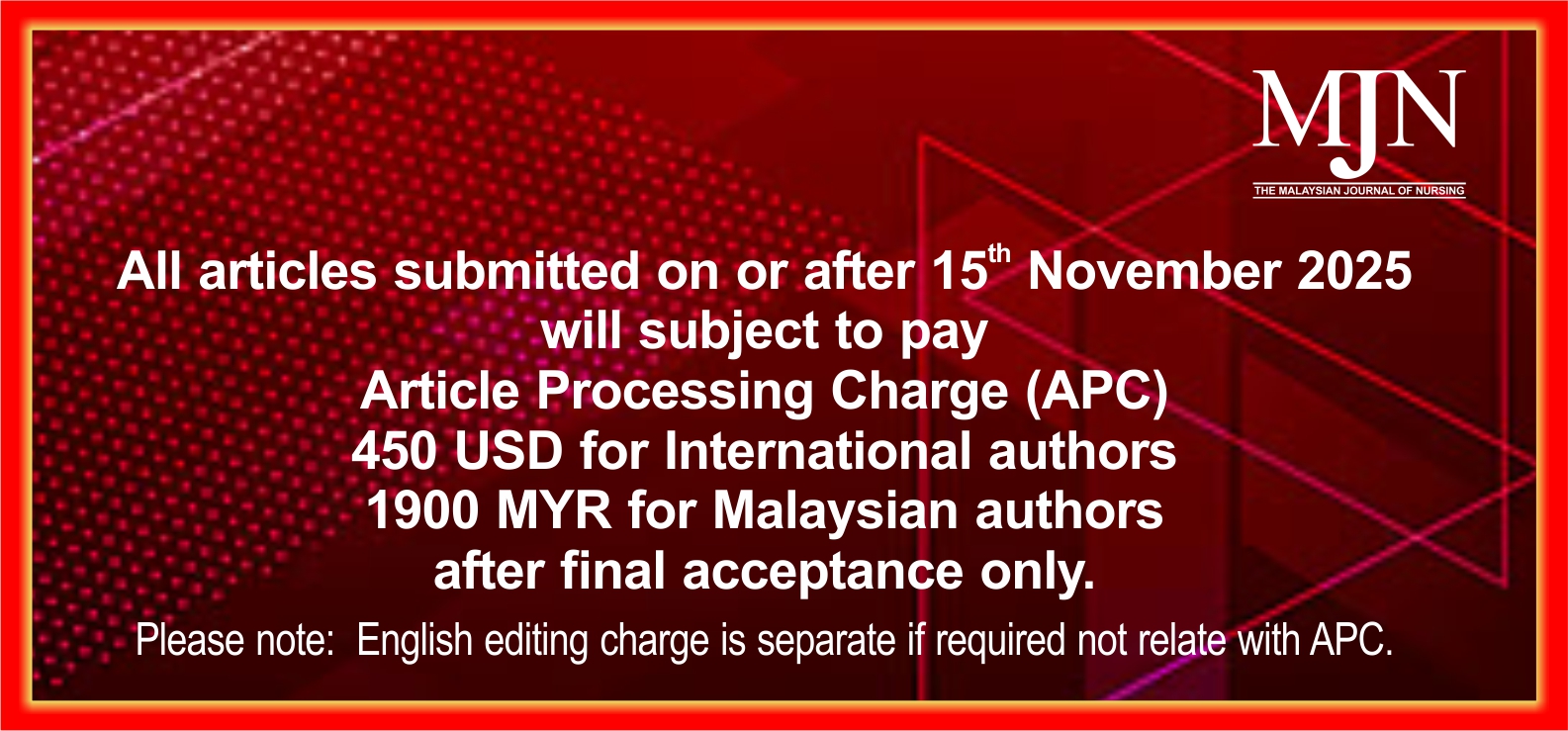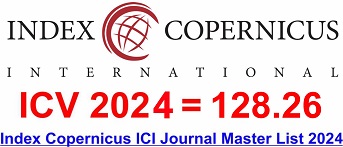Narratives from the Newly Appointed Deans of Selected Philippine Colleges of Nursing in Establishing Baccalaureate Nursing Program
DOI:
https://doi.org/10.31674/mjn.2025.v16i04.030Abstract
Background: The healthcare landscape is in constant flux, driven by evolving patient needs, technological advancements, and shifting health policies. This demands a nursing workforce with critical thinking, adaptability, and specialised skills to manage complex patient cases effectively. However, the current supply of nursing graduates in the Philippines falls short of meeting the growing healthcare demands. Establishing more Bachelor of Science (BSc) Nursing programs is crucial to bridge this gap and ensure high-quality patient care. Expanding these programs will increase the number of qualified nurses, addressing staffing shortages and improving patient outcomes. Methods: This research used a narrative inquiry approach, focusing on ten recently appointed deans of nursing programs who were tasked with establishing BS Nursing programs at private colleges or universities in the Philippines. This ensured participants had firsthand experience with the challenges and complexities involved in program development. Thematic analysis was employed to identify key themes. Results: Thematic analysis revealed several complexities in establishing a BS Nursing program, including securing qualified faculty, obtaining accreditation, securing clinical placements, managing financial investments, attracting students, and balancing theory and practice. The need to keep the curriculum current, manage student expectations, and balance faculty and student needs also emerged as significant challenges. Despite these obstacles, the importance of establishing additional BS Nursing programs is evident in addressing the nursing shortage and ensuring quality care. Conclusion: This research offers valuable insights into the complexities of establishing BS Nursing programs, providing guidance for future program developers and policymakers in the Philippines.
Keywords:
Bachelor of Science in Nursing, College of Nursing, Deans, Narrative Inquiry, PhilippinesDownloads
References
Al-Worafi, Y. M. (2024). Cost of nursing education in developing countries. In Handbook of Medical and Health Sciences in Developing Countries: Education, Practice, and Research. Springer, Germany. 1-13. https://doi.org/10.1007/978-3-030-74786-2_185-1
Bautista, R. A., & Orte, C. J. S. (2021). Perceptions of Filipino nursing deans towards outcomes-based education (O.B.E.) in nursing: The case of colleges of nursing in Region III, Philippines. Annals of Medical and Health Sciences Research, 11(7), 1–11. Retrieved from: https://www.amhsr.org/articles/perceptions-of-filipino-nursing-deans-towards-outcomes-nursing-deans-towardsoutcomes-based-education-obe-in-nursing-the-.pdf. Accessed on 18th February, 2024.
Belita, E., Carter, N., & Bryant-Lukosius, D. (2020). Stakeholder engagement in nursing curriculum development and renewal initiatives: A review of the literature. Quality Advancement in Nursing Education-Avancées en Formation Infirmière, 6(1), 2. https://doi.org/10.17483/2368-6669.1200
Bernardino Jr, G. D., Samson-Cordero, J. A., De Guzman, C. J. A., Altuhaini, A. D. R., & Palaganas, E. C. (2023). Nursing shortage in the Philippines: Dissecting an entanglement of issues. Philippine Journal of Nursing, 93(1), 1–11. Retrieved from: http://www.pna-pjn.com/pjn-archives/#toggle-id-2. Accessed on 10th February, 2024.
Bowen, F., Harper, D. C., Sample, N. S., & Shirey, M. R. (2024). Academic leadership for advancing diversity, equity, and inclusion. Nursing Administration Quarterly, 48(1), 21-32. https://doi.org/10.1097/NAQ.0000000000000612
Bryman, A. (2007). Effective leadership in higher education: A literature review. Studies in Higher Education, 32(6), 693-710. https://doi.org/10.1080/03075070701685114
Cabanes, R. V. D., Joaquin-Quino, R. M., & Salvacion, M. L. D. S. (2023). Quality assurance of nursing education in the Philippines. Philippine Journal of Nursing, 93(2). Retrieved from: https://www.herdin.ph/index.php/partner/journal?view=research&cid=82754. Accessed on 19th January, 2024.
Calaguas, N. P. (2023). Mentoring novice nurse educators: Goals, principles, models, and key practices. Journal of Professional Nursing, 44, 8-11. https://doi.org/10.1016/j.profnurs.2022.11.002
Chan, Z. C. (2013). A systematic review of creative thinking/creativity in nursing education. Nurse Education Today, 33(11), 1382-1387. https://doi.org/10.1016/j.nedt.2012.09.005
Clandinin, D. J. (2006). Handbook of narrative inquiry: Mapping a methodology. Sage Publications, USA.
Clochesy, J. M., Visovsky, C., & Munro, C. L. (2019). Preparing nurses for faculty roles: The Institute for Faculty Recruitment, Retention and Mentoring (INFORM). Nurse Education Today, 79, 63-66. https://doi.org/10.1016/j.nedt.2019.05.018
Crombie, A., Brindley, J., Harris, D., Marks-Maran, D., & Thompson, T. M. (2013). Factors that enhance rates of completion: What makes students stay? Nurse Education Today, 33(11), 1282-1287. https://doi.org/10.1016/j.nedt.2013.03.020
Davis-Salazar, K. L. (2023). Professional development for academic associate deans in higher education administration: a case for decision-making as an essential skill in learning to lead. Journal of Higher Education Policy and Management, 45(6), 674-689. https://doi.org/10.1080/1360080X.2023.2223817
Day, C. (2000). Effective leadership and reflective practice. Reflective Practice, 1(1), 113-127. https://doi.org/10.1080/713693134
De Roeck, V. (2023). Health care workers and shrinking democratic space in the Philippines. Ghent University. Retrieved from: https://libstore.ugent.be/fulltxt/RUG01/003/150/989/RUG01-003150989_2023_0001_AC.pdf. Accessed on 18th February, 2024.
Derby-Davis, M. J. (2014). Predictors of nursing faculty's job satisfaction and intent to stay in academe. Journal of Professional Nursing, 30(1), 19-25. https://doi.org/10.1016/j.profnurs.2013.04.001
Dowling, J. S., & Melillo, K. D. (2015). Transitioning from departments to schools of nursing: A qualitative analysis of journeys by ten deans. Journal of Professional Nursing, 31(6), 464-474. https://doi.org/10.1016/j.profnurs.2015.04.008
Fathi, K. Y., & Ibrahim, R. H. (2023). Factors influencing integration of theory into practice in clinical skills acquisition among nursing students. Informatics in Medicine Unlocked, 37. https://doi.org/10.1016/j.imu.2023.101181
Gill, P. B. (2001). Narrative inquiry: Designing the processes, pathways and patterns of change. Systems Research and Behavioral Science: The Official Journal of the International Federation for Systems Research, 18(4), 335-344. https://doi.org/10.1002/sres.428
Hendry, P. M. (2009). Narrative as inquiry. The Journal of Educational Research, 103(2), 72-80. https://doi.org/10.1080/00220670903323354
Høegh-Larsen, A. M., Gonzalez, M. T., Reierson, I. Å., Husebø, S. I. E., Hofoss, D., & Ravik, M. (2023). Nursing students’ clinical judgment skills in simulation and clinical placement: a comparison of student self-assessment and evaluator assessment. BMC Nursing, 22(1), 64. https://doi.org/10.1186/s12912-023-01220-0
Johnson, E., & Carrington, J. M. (2023). Revisiting the nursing metaparadigm: Acknowledging technology as foundational to progressing nursing knowledge. Nursing Inquiry, 30(1). https://doi.org/10.1111/nin.12502
Kalb, K. A., O'Conner-Von, S. K., Schipper, L. M., Watkins, A. K., & Yetter, D. M. (2012). Educating leaders in nursing: Faculty perspectives. International Journal of Nursing Education Scholarship, 9(1). https://doi.org/10.1515/1548-923X.2215
Kim, J.-H. (2015). Understanding narrative inquiry: The crafting and analysis of stories as research. Sage Publications, USA.
Lutaaya, B., Ronald, B., & Nakamanya, F. (2024). Perceived changing academic roles of deans in higher education: A case of Makerere University. East African Journal of Education Studies, 7(1), 417-436. https://doi.org/10.37284/eajes.7.1.1807
MacPhee, M., Wejr, P., Davis, M., Semeniuk, P., & Scarborough, K. (2009). Practice and academic nurse educators: finding common ground. International Journal of Nursing Education Scholarship, 6(1). https://doi.org/10.2202/1548-923X.1882
Maddock, L. C. (2023). Academic middle leaders, middle leading and middle leadership of university learning and teaching: A systematic review of the higher education literature. Journal of Higher Education Policy and Management, 45(4), 357-392. https://doi.org/10.1080/1360080X.2022.2160888
McCracken, M., Currie, D., & Harrison, J. (2016). Understanding graduate recruitment, development and retention for the enhancement of talent management: Sharpening ‘the edge’of graduate talent. The International Journal of Human Resource Management, 27(22), 2727-2752. https://doi.org/10.1080/09585192.2015.1102159
Merkley, J., Ronald, K., Amaral, N., Yang, L., Ginty, L., & Jeffs, L. (2023). Enculturating, embedding and investing in fundamental care in an academic health science centre. Journal of Advanced Nursing, 79(3), 933-941. https://doi.org/10.1111/jan.15332
Middleton, K., Cooke, A., & May, R. (2024). “It allowed us to let our pain out”: perspectives from voice-hearers and their voices on the ‘talking with voices’ approach. Psychosis, 16(2), 131-143. https://doi.org/10.1080/17522439.2022.2141840
Mollman, S., Plemmons, C., Ireland, C., Heier, C., Ray, A., & Mitchell, A. (2024). Shared governance through bylaws: Transformation within a college of nursing. Journal of Nursing Education, 63(5), 277-281. https://doi.org/doi:10.3928/01484834-20240305-01
Nardi, D. A., & Gyurko, C. C. (2013). The global nursing faculty shortage: Status and solutions for change. Journal of Nursing Scholarship, 45(3), 317-326. https://doi.org/10.1111/jnu.12030
Nichols, L. S., Pollio, E., Fifolt, M., & Shirey, M. R. (2024). Building a practice ready and resilient nursing workforce. Nursing Administration Quarterly, 48(2), 127-138. https://doi.org/10.1097/NAQ.0000000000000631
Nutayi, O. M. (2024). The effect of having a higher percentage of better-educated nurses at a BSN prepared educational level or higher in any clinical setting to improve patient outcomes (Doctoral dissertation, Liberty University). Liberty University Digital Commons. Retrived from: https://digitalcommons.liberty.edu/cgi/viewcontent.cgi?article=6401&context=doctoral. Accessed on 10th February, 2024.
Oh, E. G., & Yang, Y. L. (2019). Evidence-based nursing education for undergraduate students: A preliminary experimental study. Nurse Education in Practice, 38, 45-51. https://doi.org/10.1016/j.nepr.2019.05.010
Ortiga, Y. Y. (2014). Professional problems: The burden of producing the “global” Filipino nurse. Social Science & Medicine, 115, 64-71. https://doi.org/10.1016/j.socscimed.2014.06.012
Penaflor-Espinosa, M. (2016). Technology integration in nursing education: Its implications to colleges of Nursing in Western Visayas, Philippines. International Journal of Hybrid Information Technology, 9(9), 375-392. https://doi.org/10.14257/ijhit.2016.9.9.35
Redmond, G. M. (1991). Life and career pathways of deans in nursing programs. Journal of Professional Nursing, 7(4), 228-238. https://doi.org/10.1016/8755-7223(91)90032-G
Rich, K. L., & Nugent, K. E. (2010). A United States perspective on the challenges in nursing education. Nurse Education Today, 30(3), 228-232. https://doi.org/10.1016/j.nedt.2009.10.015
Rodriguez, S. M. (2013). The impact of limited clinical sites on prelicensure nursing education programs: Current issues and recommendations for the future St. Catherine University].
Saghafi, F., Bromley, P., Guzys, D., Harkness, L., Phillips, M., Mather, C., Saunders, A., Say, R., Teare, C., & Tori, K. (2023). Graduate nurses' capability upon entering the workforce: An integrative review. Nurse Education Today, 121. https://doi.org/10.1016/j.nedt.2022.105659
Salmond, S. W., & Macdonald, M. (2021). Invest in nursing: The backbone of health care systems. JBI Evidence Synthesis, 19(4), 741-744. https://doi.org/10.11124/JBIES-21-00089
See, E. C. W., Koh, S. S. L., Baladram, S., & Shorey, S. (2023). Role transition of newly graduated nurses from nursing students to registered nurses: A qualitative systematic review. Nurse Education Today, 121. https://doi.org/10.1016/j.nedt.2022.105702
Serafini, F., & Reid, S. F. (2023). Multimodal content analysis: Expanding analytical approaches to content analysis. Visual Communication, 22(4), 623-649. https://doi.org/10.1177/147035721986413
Smith, K. (2022). Filling a void: An examination of academic nursing administrators' perceptions of organizational support. Journal of Professional Nursing, 43, 61-67. https://doi.org/10.1016/j.profnurs.2022.09.005
Smith, S., Elias, B. L., & Baernholdt, M. (2019). The role of interdisciplinary faculty in nursing education: A national survey. Journal of Professional Nursing, 35(5), 393-397. https://doi.org/10.1016/j.profnurs.2019.03.001
Sommers, C., & Rio, C. J. (2023). Nursing education in low and lower-middle income countries: Context and trends. In Clinical Education for the Health Professions: Theory and Practice, 107-120. Springer. https://doi.org/10.1007/978-981-15-3344-0_117
Sterner, A., Eklund, A., & Nilsson, M. S. (2023). Prepared to learn but unprepared for work: A cross sectional survey study exploring the preparedness, challenges, and needs of newly graduated nurses entering a hospital-based transition program. Nurse Education in Practice, 72. https://doi.org/10.1016/j.nepr.2023.103782
Thornhill-Miller, B., Camarda, A., Mercier, M., Burkhardt, J.-M., Morisseau, T., Bourgeois-Bougrine, S., Vinchon, F., El Hayek, S., Augereau-Landais, M., & Mourey, F. (2023). Creativity, critical thinking, communication, and collaboration: assessment, certification, and promotion of 21st century skills for the future of work and education. Journal of Intelligence, 11(3), 54 pages. https://doi.org/10.3390/jintelligence11030054
Tseng, H.-C., Chou, F.-H., Wang, H.-H., Ko, H.-K., Jian, S.-Y., & Weng, W.-C. (2011). The effectiveness of problem-based learning and concept mapping among Taiwanese registered nursing students. Nurse Education Today, 31(8), e41-e46. https://doi.org/10.1016/j.nedt.2010.11.020.
Tereso. Tullao (Jr., author), & Tullao Jr, T. S. (2000). An evaluation on the readiness of the Filipino professionals to meet international standards. Philippine APEC Study Center Network. Retrieved from: https://pidswebs.pids.gov.ph. Accessed on 11th January, 2024.
Vista, A. M., Balucio, T. M., & Yap, T. B. (2022). Graduating student nurses’ preparedness for nursing practice amid COVID-19. African Journal of Nursing and Midwifery, 24(3), 1-17. https://doi.org/10520/ejc-ajnm_v24_n3_a13
Young, C., & Roos, J. H. (2024). Factors that influence the quality of work life in nursing departments: A management perspective. International Journal of Africa Nursing Sciences, 20. https://doi.org/10.1016/j.ijans.2024.100672
Published
How to Cite
Issue
Section
License
Copyright (c) 2025 The Malaysian Journal of Nursing (MJN)

This work is licensed under a Creative Commons Attribution-NonCommercial-NoDerivatives 4.0 International License.



































